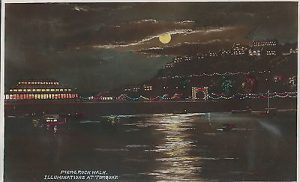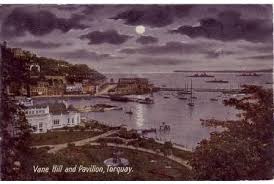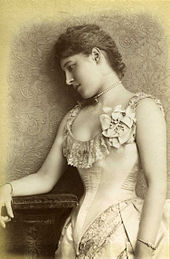The first thing to point out is that it doesn’t matter whether you think that ghosts are real or not to take them seriously. Millions of British people do believe. Here’s the statistics: 39% of us believe that a house can be haunted by some kind of supernatural being; 34% believe that ghosts exist; 31% believe that they have seen, or felt, a ghost; 9% believe they have communicated with the dead.
It’s also interesting that women are 10% more likely than men to believe in ghosts, and 17% more likely to believe in life after death. Yet surprisingly there isn’t a close link between faith and a belief in the supernatural – only 23% of British people say they are religious.

So there’s something going on here and it appears that more of it is going on in Torquay. A few years ago an estate agency looking for publicity surveyed the whole country to see what made each town different. They found that more people believe in ghosts in Torquay than anywhere else in England and Wales.

So, even for the most sceptical of us, Torquay’s ghosts are worth a bit of further study. You could look at the issue from two opposite perspectives. The first is that ghosts are a mix of fantasy, fun, foolishness and fraud. Indeed, some Spotted posters get very annoyed when the subject is even mentioned. The second perspective is that the question ‘do ghosts exist?’ is the most important that anyone can ask… ever. That’s because if ghosts do exist then we could have proof that there is life after death. Most people, however, probably take a view somewhere between these two viewpoints.
But even for non-believers ghost stories and sightings can tell us something about a whole range of human experiences: in psychology; morality; sleep; folk belief; human evolution; grief; and a way to listen to the voices of the unheard.
Let’s start at the beginning. It looks like we have had a belief in ghosts for a very long time. In Paviland in the south west of Wales a 33,000 years old male skeleton was found along with ivory rods and rings. Since this young man was buried with valuable items it seems that there was a belief that life wasn’t the end, and that he might be going somewhere – and if he was going somewhere it’s logical that he may be able to return. Ghosts are also in the Bible – written around 600BC we have the Witch of Endor summoning the Prophet Samuel’s spirit.
Closer to home, as a town Torquay really began in the early eighteenth century. The small rural communities that came together held a range of supernatural beliefs including ghosts. This was despite Anglican clergy dismissing the paranormal as being mere superstitions associated with the Catholic faith. Yet, Torquay’s growing nineteenth century non-conformist churches were more open to the notion – John Wesley and his Methodist followers, for example, believed in apparitions.

So let’s look at some of Torquay’s ‘Revenant Rules’ – themes around local ghost sightings and stories. First of all, people certainly see things they can’t understand. A few years ago the landlord of The Clipper Inn in Melville Hill clearly saw the manifestation of an old gentleman smoking his pipe in the bar. I spoke to the landlord and have no doubt that he saw something. This is better evidence than the usual FOFA (friend of a friend) reporting that we usually get where much of the information comes from distant sources (as in “It happened to a friend of a friend of mine”) and cannot be confirmed.

One suggestion is that these kinds of brief sightings could be caused by ‘pareidolia’, our tendency to interpret patterns in random perceptions. Perhaps humans have evolved a survival instinct so we can see through a predator’s camouflage. Whether it’s a suspiciously deserted water hole a million years ago or an empty old house we instinctively feel something is wrong, assume a threatening situation and so are more susceptible to these false signals. To take one example, it’s been proposed that the ghostly organ recitals of St John’s Church in Montpellier Road (pictured below) were the consequence of wind blowing through the pipes, which then prompted witnesses to see ghostly figures playing the organ.

And we know that people make up stories and those ghosts are entertaining. In a rural society where few people had the ability to read, tales of the supernatural acted as a useful way of remembering notable events. Such storytelling, on the other hand, also distorted and misremembered. Specifically, we may have to look to our Victorian tourist guides who were known to invent or import exciting stories to enhance their income.
People the add bits – accretions – to stories they have heard and import other tales. So we have the ‘Shrieking Nun’s ghost of Ilsham Grange’, who had starved in a locked chest – when properly buried, our noisy nun disappears. This story may not be as old or genuine as it first appears. There is a similar legend, the Mistletoe Bough, which first appeared in the form of a poem in 1823. Indeed, the more of a back story a ghost has, the less likely it is to be ‘true’.
Ghost stories can pass on moral and safety messages. They warned the unwary and children away from dangerous places: Kent’s Cavern had its malicious pixies; while the execution site at Gallows Gate was beyond the community, the refuge of exiles, and so the haunt of human undesirables. Another theory is that ghost stories were spread to keep people indoors at night while smugglers carried out their illicit business – note the legend of the lanes of Maidencombe haunted by Springheel Jack, the vicious spectre first described in London in 1837.
A further Gothic morality lesson concerns Matilda whose spectre roams Daddyhole Plain. In a fit of jealous anger she was said to have sold her soul – Daddy being another name for the Devil. Yet, again, the popular 1796 novel ‘The Monk: A Romance’ also has a Matilda who similarly gives up her soul. More recently, we have Lilly Langtree haunting a house in Lower Warberry Road, the site of her supposed affair with Edward VII. Supporting the theory of this as an imported tale, the same unearthly visitation occurs in Bournemouth and in several houses in London. Notably, the usual rules of supernatural infestation seem to have been broken in all these places – for from being hopelessly in love with her royal paramour, Lilly (pictured below) also had dalliances with a range of other men, died in Monaco and was buried in Jersey.

Distortion and misremembering effects many local legends. For example, in 1588 Torre Abbey‘s Spanish Barn acquired its name after 397 Spanish sailors were imprisoned there. The prisoners were quickly sent out of the Bay, but myths about their stay emerged as memory of the event faded. One story tells that in Upton “the blood of the Spaniards ran like water… the spirits of the slaughtered Spaniards visit the spot”. Yet, while the Barn was certainly overcrowded, and around 15 Spaniards perished, the prisoners were too valuable not to be ransomed.
The best known of the Abbey legends is that of the Spanish Lady. We read of the love that led her “to don male attire in order to join the armada, shrouded in a gracefully flowing mantilla, she may also at times be seen.” By the twentieth century these few lines had become melodrama: “The poor little flower of southern Spain quickly faded in this dreadful place. Her troubled spirit is still to be seen drifting slowly and rather wearily through the Abbey park”.
We also know that people see ghosts where they expect to see them. Experiments have been undertaken where people have been told that a place is haunted – they then are much more likely to ‘see’ a ghost. Indeed, it may be that some old buildings aren’t seen as complete until they acquire a restless spirit, which can often lead to either dramatic or vague hauntings. We have the very helpful hermit’s ghost of the medieval St Michael’s Chapel near Torre Station, and Barton Hall’s ‘White Ghost’, the spirit of a woman murdered by her husband. And places associated with executions, such as Gallows Gate (pictured below), were traditionally avoided at night though, as we have forgotten their original purpose, their reputation for being haunted has faded from our collective memory.

Individuals are clearly influenced by books and movies. As the Gothic literature of the early nineteenth century gave way to more complex tales, affluent Torquay embraced the occult and mysterious. The greatest influence came from Charles Dickens, who visited Torquay in 1862. Though Dickens didn’t believe in apparitions, he found them a useful plot device and further popularised the ghost story.
The most notable example of where movies seem to have promoted sightings of something extraordinary came in 1933 when King Kong was released – reports of the Loch Ness Monster rocketed. Closer to home note how Torquay Museum (below) now seems to have acquired a reputation for supernatural manifestations since the 2006 movie ‘Night at the Museum’. Here’s another thing worth noticing, ghosts are profitable. Ticket prices for paranormal evenings and medium shows at Princess Theatre aren’t cheap, for instance.

There was one Torquay tradition that was formed around a belief in the supernatural. This was Spiritualism which held that the spirits of the dead could be contacted by mediums. It quickly became a blend of parlour game, entertainment and new religion. Many prominent Torquay spiritualists were middle and upper class women – Harbourside resident Elizabeth Barrett Browning (pictured below) being one devotee. The Bay’s Victorian ghost then became middle class, familiar and friendly, and able to be contacted in séances across town.
This upsurge in interest attracted the attention of the Victorian scientific mind and ghosts became a subject for proper enquiry. The first national organisation to conduct scholarly research was the Society of Psychical Research founded in 1882. Since then, despite thousands of studies, no credible scientific evidence for ghosts has been found. Most investigators have concluded that apparitions are caused by a range of non-supernatural phenomenon.
Our final Revenant Rule is that you can sometimes date a Torquay ghost by what it does. And they change over time. A general rule is that up to the eighteenth century ghosts weren’t strangers – if you saw a ghost you would recognise them. Till the twentieth century ghosts were benign and even useful. For example, if you ever see a ghost dwarf near Chudleigh Knighton follow him to a stash of hidden gold. It was only in the early twentieth century that the friendly local ghost became hostile. Violent times can arouse aggressive entities and it was during the Great War that Torquay embraced the poltergeist. In 1917 the Spiritualist Violet Tweedale (pictured above) investigated the Warberries’ ‘Castel-a-Mare’ (pictured below), which had reputedly been haunted for fifty years. One of Violet’s investigators was quickly possessed and had to be exorcised. A few years later, the writer Beverley Nichols also visited – something “black, silent and man-shaped rushed from the room and knocked him to the floor.”
So that’s the story of the evolution of the Torquay ghost. They change as we change and so they tell us something about ourselves. Whether they exist or not is up to you to decide…
For more local news scroll down or click here.


You can join us on our social media pages, follow us on Facebook or Twitter and keep up to date with whats going on in South Devon.
Got a news story, blog or press release that you’d like to share or want to advertise with us? Contact us
































